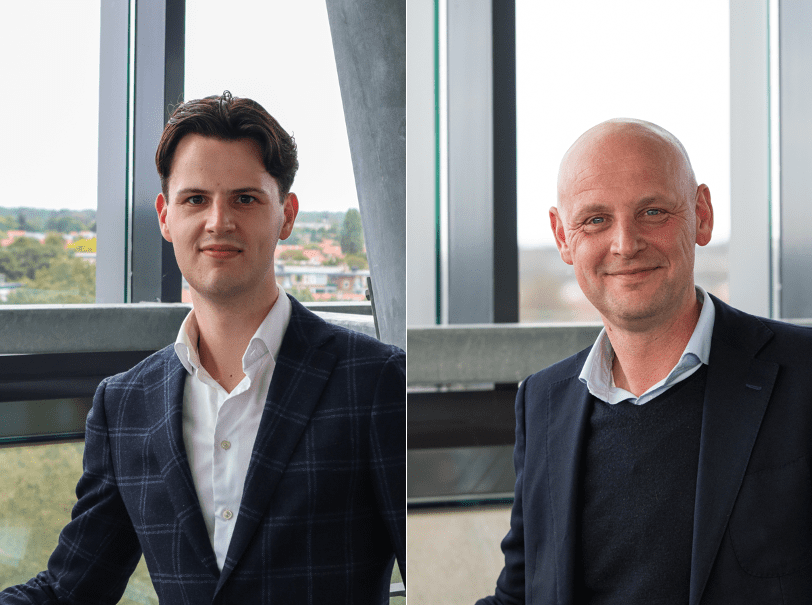By Tim Vellema
The world is becoming increasingly complex. As a result, organisations and consumers do not want to be distracted by peripheral matters. Therefore, a customer increasingly includes the effort it takes to use and maintain the condition of a product in its purchase consideration. This means that the standalone value that a product creates is no longer sufficient. The aspects involved in use, (e.g. replacement, maintenance, administrative burden) must also appeal to the customer.
Consequently, a shift in marketing started to take place. This shift is centred around the idea that we move from a ‘goods-centred and customer centric’ society towards a ‘service-centred’ one. This new ‘service-centred’ logic argues that customers are the focal point and are in charge of value creation. As such, organisations become ‘value facilitators’ instead of ‘value producers’. They not only supply the product, but also facilitate and offer value in use.

A business model which does just that is the ‘As a service’ (AAS) business model. This is an emerging business model, which reduces complexity and takes a ‘service-centred approach’. Whilst the ‘SaaS’ (software-as-a-service) business model has been around for a while now, with the success of CRM software supplier Salesforce as a prime example, the AAS business model is not limited to software.
This business model argues that customers no longer necessarily want to own the product, rather they want to use it. As a result, a user rents the product from the supplier, pays for its use and the supplier remains responsible for all post-service matters (maintenance, replacements etc.). Volvo, for example, introduced a subscription-based service with a notice period of only three months, which is very uncommon for luxurious cars. The so-called ‘Care by Volvo’ makes that the customer only pays a monthly fee for the use of the car, while Volvo is responsible for the post-service matters (excluding fuel or electricity). Furthermore, since customers no longer have to invest in a product, but only pay for use, their Total Cost of Ownership is most often also lower.
This article discusses the differences between AAS and buying and leasing, looks at various examples, investigates the potential advantage of an AAS business model, points out the challenges and looks at what to keep in mind when setting up such a business model.
Differences between ‘As a service’, buying and operational lease
The difference between product ownership and AAS is substantial. A traditional transaction involves a customer buying the product, after which the seller only offers warranty required by law or charges an additional fee for follow-up services.
The difference between operational lease and AAS is more subtle. The main difference between operational lease and AAS is the duration of the contract. When closing an operational lease contract, the customer agrees to use a product for a period which is agreed on in advance. If the customer decides that he or she no longer wants to use the product, the remainder of the period still has to be paid in full (or a ‘fine’ is applied). In contrast, an AAS contract is very flexible and often on a monthly basis.
In addition to the contractual differences, AAS can also be a more ecologically sustainable solution. Since the customer only pays for use and sends the product back to the supplier afterwards, who remains owner, the product remains part of a closed loop. The product will be, if needed, repaired and refurbished and shipped to a new user. This, therefore, reduces the amount of products that have to be manufactured, since they will be re-used until the end of their useable life and (often) recycled afterwards. This reduces the ecological footprint of the supplier and leads to a more sustainable manufacturing process.
Examples of the ‘As a service’ business model
B2B ‘As a service’ Example
Signify provides ‘Light as a service’ for Schiphol Airport since 2015. Signify is owner of the lamps, while Schiphol only pays for its use. Signify consulted Engie Services to adapt the lamps in such a way to increase their longevity by 75% and make them as easily replaceable as possible. Signify remains responsible for the durability and performance of the lightning system and is in charge of recycling the lamps at the end of their useful life.
B2C ‘As a service’ Example
Car manufacturer Lynk & Co is active in Europe since 2020. It offers a ‘Car as a service’ month-on-month subscription. For €500 a month (excluding fuel) a customer pays for the use of the car including maintenance, insurance and road tax.
Furthermore, sustainability is also very much part of their value proposition. According to Lynk & Co cars are only used 4% of the time. That’s why they offer their customers the opportunity to share their car. This reduces the number of cars that have to be produced, and thereby the impact on the environment, and lets customers lower their monthly fee since they receive compensation when they lend out their car.
Advantages of an ‘As a service’ business model
The first advantage is especially relevant for premium products. Since the AAS business model doesn’t require customers to make an upfront investment, premium products become more accessible to a larger range of customers. Take the ‘Care by Volvo’ subscription for example. The ‘buy now’ price tag of the available models make that these cars belong to the premium segment. However, with the ‘Care by Volvo’ subscription, these cars also become accessible to customers who normally aren’t able to buy cars in this segment. This enables organisations to have access to a wider pool of potential customers, which leads to potentially more revenue generation.
A second advantage of setting up an AAS business model is the continuous feedback loop. Since the customer will be serviced at every step during its use of the product, constant contact is required. This provides the supplier with valuable data to continuously learn from the customer experience and improve both the product and service.
A third advantage is the opportunity to increase customer loyalty. Since the customer will be serviced during its product use, an organisation is able to influence the customer experience at all times. If this opportunity is combined with improvements based on the continuous feedback loop, customers can be serviced in a better way, customer loyalty can be increased and ‘Customer Lifetime Value’ (CLV) can be enhanced. CLV is based on the following equation: ‘value of the relationship * lifespan of the relationship’. This means that if the needs of the customer are acknowledged, the likelihood of extending and increasing the value of the relationship is improved.
Companies which engage into contracts with their clients with a duration of over one month, benefit from a final advantage. A contract with such a duration leads to a steady cash inflow along the longevity of the product. This makes revenue relatively more predictable and steadier. This, in turn, improves the liquidity of a company, lowers financing needs and lowers overall business risk levels.
Challenges related to an ‘As a service’ business model
The first important aspect is the focus and mindset of the board of an organisation. An AAS business model takes a completely different approach than a business model which is solely focused on a one-time traditional transaction. Instead of only making sure that the customer buys the product that fits his or her needs, a supplier has to make sure that the customer receives value in use. The goal is to service the client during the ‘purchase’ decision and during its use. This means that continuous customer contact is a necessity to learn how to help them, improve their user experience and solve their problems.
Another challenge is related to refurbishing and quality. While this challenge is not applicable to all AAS companies, since refurbishing isn’t a requirement for this business model, it is very common. Circularity is a big advantage of the AAS business model, however, the ‘refurbished’ products that new customers get must be of the same quality as brand-new products. Therefore, for an ‘As a service’ organisation, it is very important to manage all aspects of the required maintenance, repairs and recycling, to deliver high quality products to the customer, while minimising the costs. To minimise the costs, an organisation has to be very aware of the potential impact that repairs and maintenance can have on their margin. Since maintenance and (most) repair costs are part of the monthly fee, the organisation has to design the product in such a way, or make sure the customers handle it with care, to minimise the large impact that these costs may have.
Finally, companies may face challenges related to the capital intensity of an AAS business model. Since the customer pays for the use of the product, there will be no immediate large inflow of cash. The product, therefore, requires a large upfront investment. As a consequence, a capital intensive AAS business model, often requires capital injections from investors such as banks or private equity.
How to set up an ‘As a service’ business model
If you want to set up an AAS business model, there are multiple factors that you have to take into account. We have selected three important ones.
- As mentioned above, it is vital to have a service-oriented organisation and a culture which supports that. This mindset starts with the vision of the board, which should be translated to a fitting organisational culture. The organisation should facilitate ‘value in use’ and service the customer at all times.
- Another thing to keep in mind is that this business model doesn’t fit every product, and therefore, every organisation. Think about which ‘pain’ you take away for the customer. Why would a customer want to ‘use’ the product instead of ‘owning’ it? If you sell a product that doesn’t fit the ‘service’ concept, then you should be wary about pursuing this business model. For this business model to succeed, the ‘problem and hassle’ of owning a product must be big enough for a customer to consider an AAS proposition. In the end every value proposition should be based on client needs; the product should fit the business model and shouldn’t be squeezed into it. The solution must be convenient enough to compensate for the premium price that the customer often has to pay. You will only be able to create value if this is the case.
- Another important factor is determining the price of your ‘As a service’ product. Do you focus on volume, a premium price or are you so unique that you can realize both? Since it is a capital-intensive business model it needs a solid business case. This requires a detailed estimation of the Total Cost of Ownership, price elasticity, willingness to pay and a convincing pitch.
Do not hesitate to reach out to The Next Organization!
Are you considering setting up an ‘As a service’ business model, but would you like assistance during the strategy formulation and implementation? The Next Organization has extensive experience on assisting companies optimising their business model. Please reach out to founder Elrik Paap at epaap@tnxto.com or consultant Tim Vellema at tvellema@tnxto.com.
Several sources have been consulted during the creation of this article. The list of references is available upon request.




